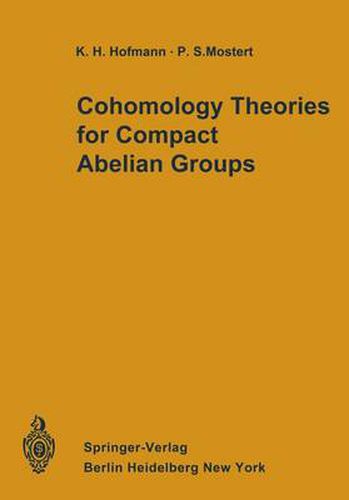Readings Newsletter
Become a Readings Member to make your shopping experience even easier.
Sign in or sign up for free!
You’re not far away from qualifying for FREE standard shipping within Australia
You’ve qualified for FREE standard shipping within Australia
The cart is loading…






This title is printed to order. This book may have been self-published. If so, we cannot guarantee the quality of the content. In the main most books will have gone through the editing process however some may not. We therefore suggest that you be aware of this before ordering this book. If in doubt check either the author or publisher’s details as we are unable to accept any returns unless they are faulty. Please contact us if you have any questions.
Of all topological algebraic structures compact topological groups have perhaps the richest theory since 80 many different fields contribute to their study: Analysis enters through the representation theory and harmonic analysis; differential geo metry, the theory of real analytic functions and the theory of differential equations come into the play via Lie group theory; point set topology is used in describing the local geometric structure of compact groups via limit spaces; global topology and the theory of manifolds again playa role through Lie group theory; and, of course, algebra enters through the cohomology and homology theory. A particularly well understood subclass of compact groups is the class of com pact abelian groups. An added element of elegance is the duality theory, which states that the category of compact abelian groups is completely equivalent to the category of (discrete) abelian groups with all arrows reversed. This allows for a virtually complete algebraisation of any question concerning compact abelian groups. The subclass of compact abelian groups is not so special within the category of compact. groups as it may seem at first glance. As is very well known, the local geometric structure of a compact group may be extremely complicated, but all local complication happens to be abelian . Indeed, via the duality theory, the complication in compact connected groups is faithfully reflected in the theory of torsion free discrete abelian groups whose notorious complexity has resisted all efforts of complete classification in ranks greater than two.
$9.00 standard shipping within Australia
FREE standard shipping within Australia for orders over $100.00
Express & International shipping calculated at checkout
This title is printed to order. This book may have been self-published. If so, we cannot guarantee the quality of the content. In the main most books will have gone through the editing process however some may not. We therefore suggest that you be aware of this before ordering this book. If in doubt check either the author or publisher’s details as we are unable to accept any returns unless they are faulty. Please contact us if you have any questions.
Of all topological algebraic structures compact topological groups have perhaps the richest theory since 80 many different fields contribute to their study: Analysis enters through the representation theory and harmonic analysis; differential geo metry, the theory of real analytic functions and the theory of differential equations come into the play via Lie group theory; point set topology is used in describing the local geometric structure of compact groups via limit spaces; global topology and the theory of manifolds again playa role through Lie group theory; and, of course, algebra enters through the cohomology and homology theory. A particularly well understood subclass of compact groups is the class of com pact abelian groups. An added element of elegance is the duality theory, which states that the category of compact abelian groups is completely equivalent to the category of (discrete) abelian groups with all arrows reversed. This allows for a virtually complete algebraisation of any question concerning compact abelian groups. The subclass of compact abelian groups is not so special within the category of compact. groups as it may seem at first glance. As is very well known, the local geometric structure of a compact group may be extremely complicated, but all local complication happens to be abelian . Indeed, via the duality theory, the complication in compact connected groups is faithfully reflected in the theory of torsion free discrete abelian groups whose notorious complexity has resisted all efforts of complete classification in ranks greater than two.